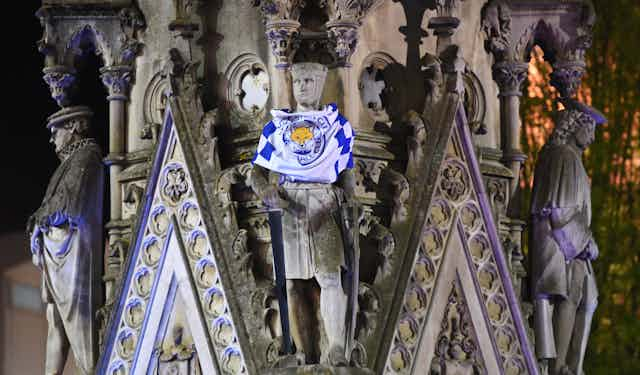Before you read this, you should probably know that I do not claim to be any kind of expert on football. In fact, my level of soccer-related ignorance is such that in order to write this article on Leicester City’s historic win at all, I first had to learn that the Premier League is not, in fact, another name for the First Division.
These “minor” details aside, what I am able to offer with a reasonable level of expertise is an outsider’s perspective, an assessment of Leicester City’s “fairy tale” win. Exactly how does one structurally define a fairy tale, and can we accurately describe The Foxes’ win as such? Or are we simply misapplying a label, leaving us relegated to the – ahem – bottom-of-the-table as far as sloppy metaphors are concerned?
First, we should probably define what we mean by “fairy tale”. For Leicester City, the term is being used to convey the idea that the team won from a position of abject impossibility; it seems their name was initially a “byword for failure” and their chances of winning rated at 5,000–1 at the start of the season. To put that into perspective, the USA beating England in 1950 has previously been cited as one of the most unlikely things ever to have happened in football history. The odds of that were 500–1.
But while other clubs have poured money into the game, winning the league by importing the most expensive players money could buy, Leicester City have won on what seems like a wing and a prayer. But it’s not just this sort of rags-to-riches story that has created the “fairy tale” effect; added to that is the seeming impossibility of the feat achieved and the vaguely uncanny addition of Richard III. His skeletal re-internment in Leicester Cathedral last year has led some to suggest that the dead King himself had a hand in the Foxes’ turn of fortune.

It may not surprise you to know that there is an entire science devoted to the study of folklore, as if it were a form of archaeology – which, in a sense, it is. Folklore has been collected and dissected from all around the world, broken up, analysed and classified into types, categories and taxonomies. There has never been a 100% fail-safe definition of “fairy tale” as opposed to a folk tale, but since the term “fairy” tends to refer to the elusive fairy folk, fairy tales always seem to refer to a slightly other reality than the one we normally inhabit. Dead kings and impossible odds? That sounds like another reality to me. Check.
But what about the morphological (yes, you read that right – told you it’s a science) structure of the Foxes’ fairy tale? According to folklorist Vladimir Propp, true fairy tales can be broken down structurally into 31 discrete elements.
This “morphology” begins with an initial situation that somehow connotes a lack or villainy of some kind, and moves through a series of intermediate functions to arrive at a conclusion of a marriage or some other worldly form of success whereby the initial lack and/or villainy is liquidated. Intermediate functions include meeting the villain, completing the task, leaving home, acquiring a magical agent, defeating the villain, pursuit, rescue and so on and so forth.
It’s hard to grasp in the abstract, so let’s use an example. Take Jack and the Beanstalk. Jack starts out dirt poor (the Lack) and loses the only item of value he possesses – a cow, which he swaps for some beans (the Magical Agent) given to him by a mysterious old man (the Donor). To cut a short story even shorter, tiny Jack defeats the mighty fee-fi-fo-fumming giant (the Villain), obtains the eminently useful gold-laying hen and becomes Lord and Master of all he surveys. Yes, exactly like Leicester City, except Claudio Ranieri is the mysterious old man and the league is the gold-laying hen. And all those big-money clubs? They’re the Giant.

Meanwhile, the Leicester Foxes club nickname exists because Leicestershire is considered the birthplace of English fox hunting. The fox is a staple character in English folklore (and indeed, elsewhere) and is typically characterised as a trickster and even a shapeshifter. In the context of the hunt, the fox is the ultimate hero: the little guy who outruns and outsmarts the big, bumbling giants on horseback with dogs baying for blood: Jack against a horde of Giants. The Leicester Foxes use a fox as their emblem; a kind of totem, if you will.
But laying Good King Richard to rest in his proper place (rather than below a car park) also fits – not so much with Propp’s morphology, but with mythic structures surrounding the hero’s birth and the death of the Father/King. Fairy tale heroes are typically at least semi-orphaned, but core cultural myths such as Oedipus, Horus, Hamlet – and, uh, The Lion King – also pivot on the Father King’s wrongful death and its attempted resolution by the Hero-Son. Hero-Son? Leicester City. Mufasa? Richard III.
So there you have it, an article which – if football knowledge is anything to go by – should never, ever have happened. But then, impossible tasks are indeed the stuff of fairy tales. Which I think brings us up to: The End.

